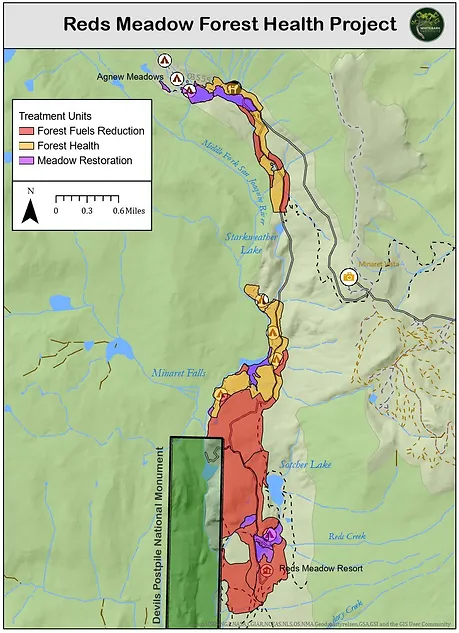Forest restoration treatments will occur in Reds Meadow Valley in the summers of 2024 and 2025 as part of the Eastern Sierra Climate & Communities Resilience Project (ESCCRP). The Reds Meadow Hazardous Fuels Reduction project is a collaboration between the Inyo National Forest and Whitebark Institute to implement forest health, fuels reduction, and meadow restoration treatments across 961 acres.


Project dates
June 17 through late September 2024
Anticipated scope of work
961 acres will be covered by thinning selected trees <20″ at breast height (DBH). The trees will be pre-marked focusing on removal of dead and diseased trees first and low value trees next.
Why is it needed?
Over the past century, the suppression of naturally ignited, low to moderate severity fires has led to an overgrowth of trees in Sierra Nevada forests. Now, when wildfires ignite, they burn hotter, faster and with more devastating consequences to both people and the ecological health of the area. Overcrowded trees also facilitate the spread of harmful diseases, including bark beetle infestations.
Once thriving meadows are now being overtaken by trees, disrupting these important ecosystems within forests. Regular fire cycles in the past would have restricted the growth of these trees, preserving habitat for the diverse plant and animal species. Comprising only 1% of the Sierra Nevada landscape, meadows have dwindled in size as trees encroach upon them.
How will we restore Reds Meadow Valley’s vitality?
Restoring forest health
Thinning of both large and small understory and overstory trees, to reverse the adverse effects of tree crowding, while helping the ecosystem and bolster its defenses against the spread of pests and pathogens.
Returning natural composition
By helping the forest return to its normal mix of tree sizes and spacing, we’re mimicking what existed before, improving biodiversity by opening up the forest canopy and allowing other species to thrive.
Reducing fire risks
Removal of trees is part of our effort to reduce hazardous fuel loading in the Reds Meadow area. This reduction in fuels will not only help protect recreational, cultural, and heritage resources in the area at risk from wildfire, but will reduce the likelihood of extreme wildfire behavior that cannot be stopped by firefighters.
Responsible woody material management
Smaller woody material is strategically left on the landscape in organized piles, which undergo a two-year drying process. These piles are burned during the winter season by Inyo National Forest firefighters to reduce fuel loading and reintroduce fire back to the landscape to promote for forest health.
Restoring meadows
By removing trees that have spread and encroached onto meadow ecosystems, we’re helping meadows retain more water throughout the season, enhancing botanical diversity and restoring these important habitats.
Funding for this project has been provided by the Sierra Nevada Conservancy, an agency of the State of California, and Inyo National Forest, US Department of Agriculture.
